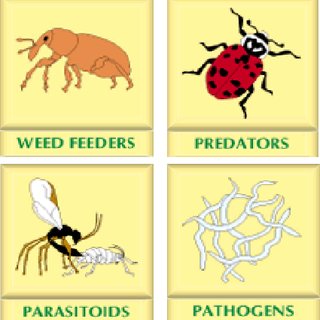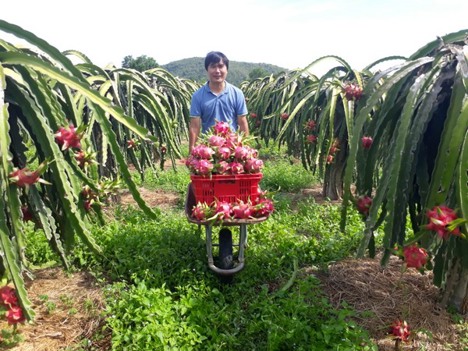Cultivating these exotic fruits demands a meticulous approach, and one unsung hero in this endeavor is the strategic utilization of predatory insects for pest control in dragon fruit. Let’s embark on a journey through the labyrinth of nature’s pest management system, where these tiny yet mighty allies play a pivotal role. In the realm of agriculture, where the delicate dance of balance between yield and pest control is ever-present, the dragon fruit orchards stand as both an enigma and a treasure trove.
Table of Contents
The Ecosystem Symphony
Dragon fruit (Hylocereus spp.) is a spectacle on its own – vibrant, succulent, and exotic. However, maintaining the health and quality of the dragon fruit crop becomes a challenge when unwanted pests make their presence felt. Enter the fascinating world of predatory insects, the unsung heroes that orchestrate a symphony of balance within the ecosystem.

A Closer Look at the Cast
- Ladybugs (Coccinellidae): These diminutive beetles, adorned with their distinctive spotted shells, are voracious consumers of aphids, thrips, and mites. In the dragon fruit orchard, they emerge as guardians, curbing the menace of destructive pests that threaten the fruit’s well-being.
- Green Lacewings (Chrysopidae): With delicate, ethereal wings and an appetite for soft-bodied pests, green lacewings are nature’s delicate but deadly predators. Their larvae feast on aphids, scale insects, and whiteflies, contributing significantly to the ecosystem’s natural balance.
- Assassin Bugs (Reduviidae): Armed with a lethal proboscis, assassin bugs silently prowl the dragon fruit foliage, preying on a diverse array of pests. From caterpillars to beetles, these stealthy hunters are the embodiment of nature’s efficient pest control.
The Tactical Deployment of Predatory Insects
Integrated Pest Management (IPM)
In the intricate dance of agriculture, Integrated Pest Management (IPM) emerges as a beacon of sustainable and eco-friendly practices. In the dragon fruit orchards, the deployment of predatory insects for pest control forms the crux of this holistic approach.
IPM isn’t a one-size-fits-all strategy; instead, it’s a tailored solution that aligns with the unique challenges faced by dragon fruit cultivators. By understanding the life cycles and feeding habits of both pests and predators, farmers can strategically introduce the right allies at the right time.
Timing is Everything
Timing becomes an art form in the deployment of predatory insects. Early detection of potential pest outbreaks allows farmers to intervene with precision. The release of beneficial insects at the opportune moment ensures a proactive defense against pests, minimizing the need for chemical interventions.

The Silent War: Predatory Insects vs. Dragon Fruit Pests
Aphid Avengers: Ladybugs on Duty
In the microcosm of dragon fruit leaves, a silent war wages between aphids and their sworn enemies – ladybugs. These pint-sized beetles, scientifically classified under Coccinellidae, are the unsung avengers of the orchard. With an insatiable appetite for aphids, they patrol the leaves, leaving no pest unchecked.
The ladybug life cycle is a tale of metamorphosis – from egg to larva to pupa and finally, the iconic adult beetle. At each stage, these insects contribute to the pest control narrative, ensuring that the dragon fruit plants remain unscathed by the relentless onslaught of aphids.

Lacewing Larvae: Nature’s Precision Predators
Enter the green lacewings, clad in delicate green attire, showcasing nature’s elegance in the pursuit of pest control. Their larvae, often mistaken for tiny caterpillars, are the real powerhouse. Equipped with formidable jaws, they exhibit a voracious appetite for aphids, mites, and small caterpillars.
In dragon fruit orchards, the deployment of green lacewings becomes a strategic move, especially during the vulnerable stages of plant growth. These creatures, belonging to the family Chrysopidae, execute a precise and calculated predation, ensuring the preservation of the dragon fruit’s delicate ecosystem.
Assassins in the Shadows: Reduviidae Unleashed
Among the shadows of dragon fruit foliage, assassin bugs from the family Reduviidae emerge as the covert defenders. Armed with a sharp proboscis, they inject a lethal concoction into their prey, liquefying internal tissues and facilitating easy consumption. These stealthy hunters target a spectrum of pests, including caterpillars, beetles, and other soft-bodied insects.
The assassin bug’s role in predatory insects for pest control in dragon fruit is akin to a silent sentinel, maintaining a delicate equilibrium by preying on potential threats without causing undue harm to the plant itself.

Benefits Beyond Pest Control
The integration of predatory insects into the dragon fruit orchard isn’t merely a tale of pest control; it’s a narrative of symbiosis and ecological harmony. Beyond their voracious appetites for pests, these insect allies offer additional benefits that contribute to the overall well-being of the ecosystem.
Pollination Prowess
As if their pest-controlling prowess wasn’t enough, many of these predatory insects moonlight as efficient pollinators. Ladybugs, lacewings, and even assassin bugs inadvertently become pollination agents, enhancing the reproductive success of dragon fruit plants.
The intricate dance of nature unfolds as these insects move from pest control duties to pollination, showcasing the interconnectedness of ecological processes within the dragon fruit orchard.
Minimal Environmental Impact
In an era where sustainable agricultural practices are paramount, the use of predatory insects for pest control aligns seamlessly with environmental stewardship. Unlike chemical interventions, which may disrupt the delicate balance of ecosystems, predatory insects target specific pests without leaving a detrimental footprint.
Challenges and Considerations
While the deployment of predatory insects for pest control in dragon fruit holds immense promise, it’s not without its challenges and considerations. Farmers navigating this path must be cognizant of various factors to ensure the success of their integrated pest management strategy.
Weather Dynamics
The effectiveness of predatory insects is intricately tied to weather dynamics. Extreme temperatures, heavy rainfall, or prolonged droughts can influence the activity and reproduction of these beneficial insects. Therefore, farmers must monitor weather patterns and adjust their strategy accordingly.
Balancing Act
Achieving the perfect balance between pest control and ecosystem preservation requires finesse. Overzealous introduction of predatory insects may inadvertently disrupt the delicate equilibrium, leading to unintended consequences. Careful monitoring and a nuanced approach are imperative.
The Future of Dragon Fruit Cultivation
As we delve into the intricate web of predatory insects for pest control in dragon fruit, a clear picture emerges – a future where agriculture embraces nature’s allies in the quest for sustainability. The dragon fruit orchards, adorned with their vibrant fruits, serve as a testament to the synergy between cultivation and conservation.
In this unfolding narrative, farmers, armed with knowledge and a commitment to ecological balance, stand as stewards of a greener and more sustainable future. As the dragon fruit orchards thrive under the watchful eyes of ladybugs, lacewings, and assassin bugs, a harmonious coexistence between agriculture and nature takes root, promising a bountiful
